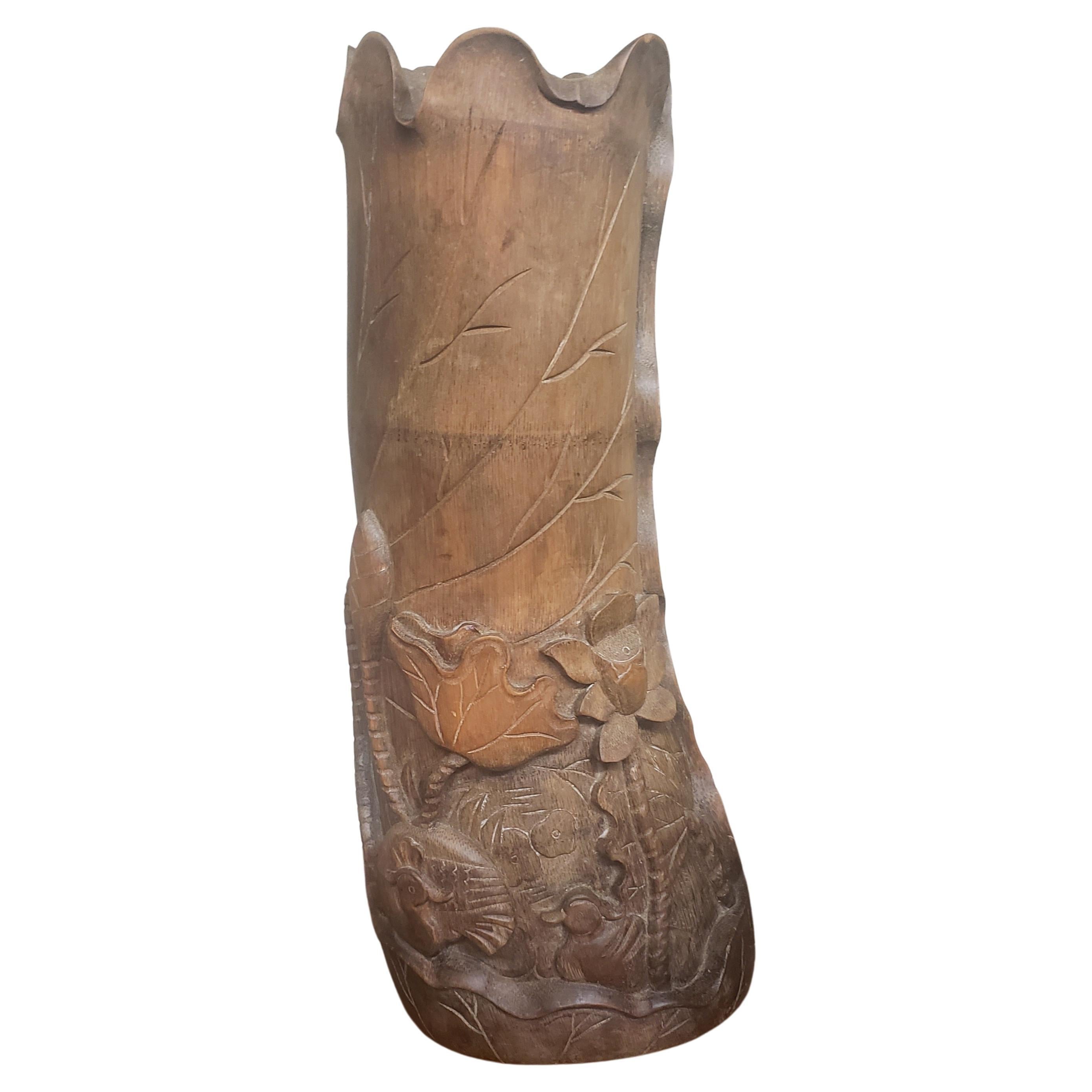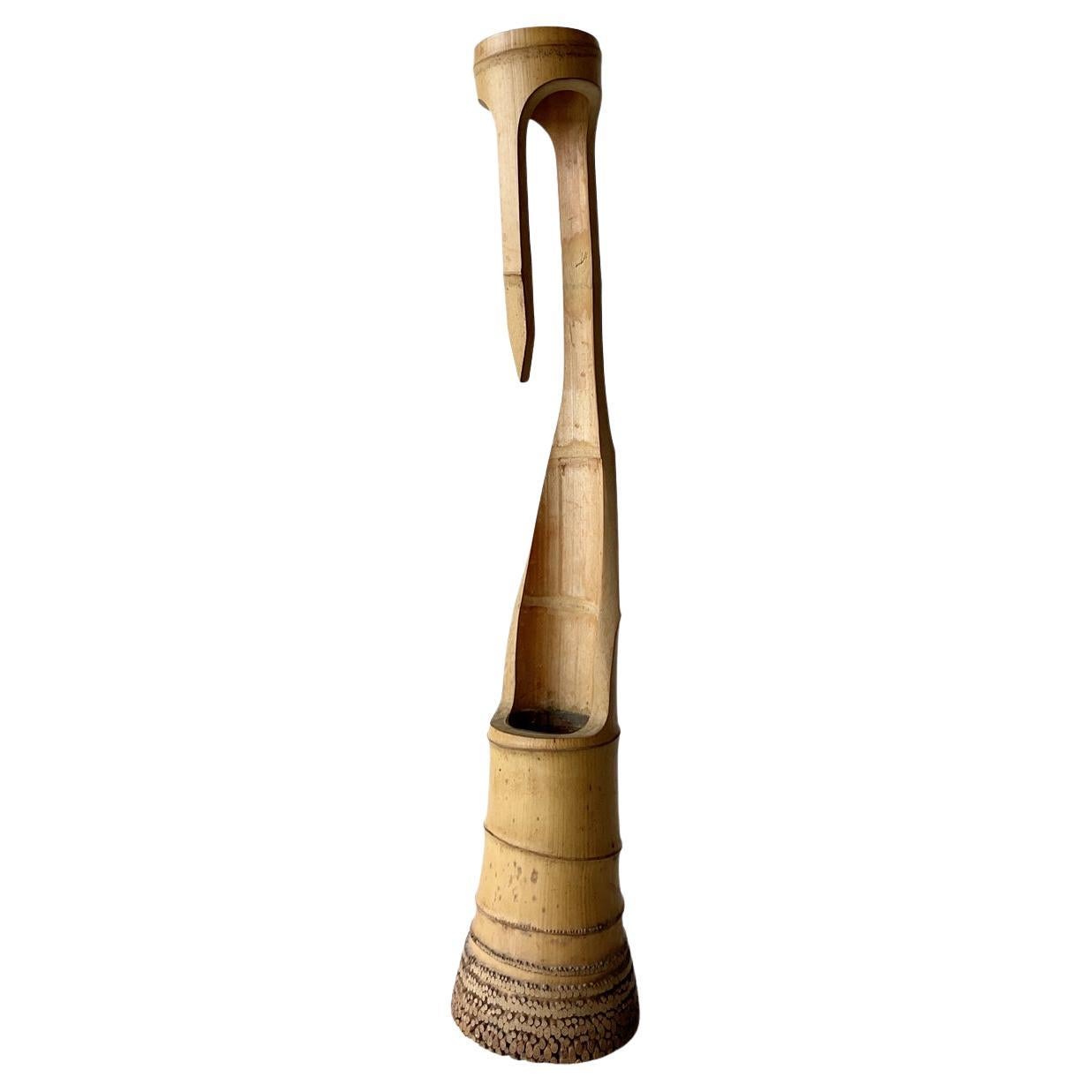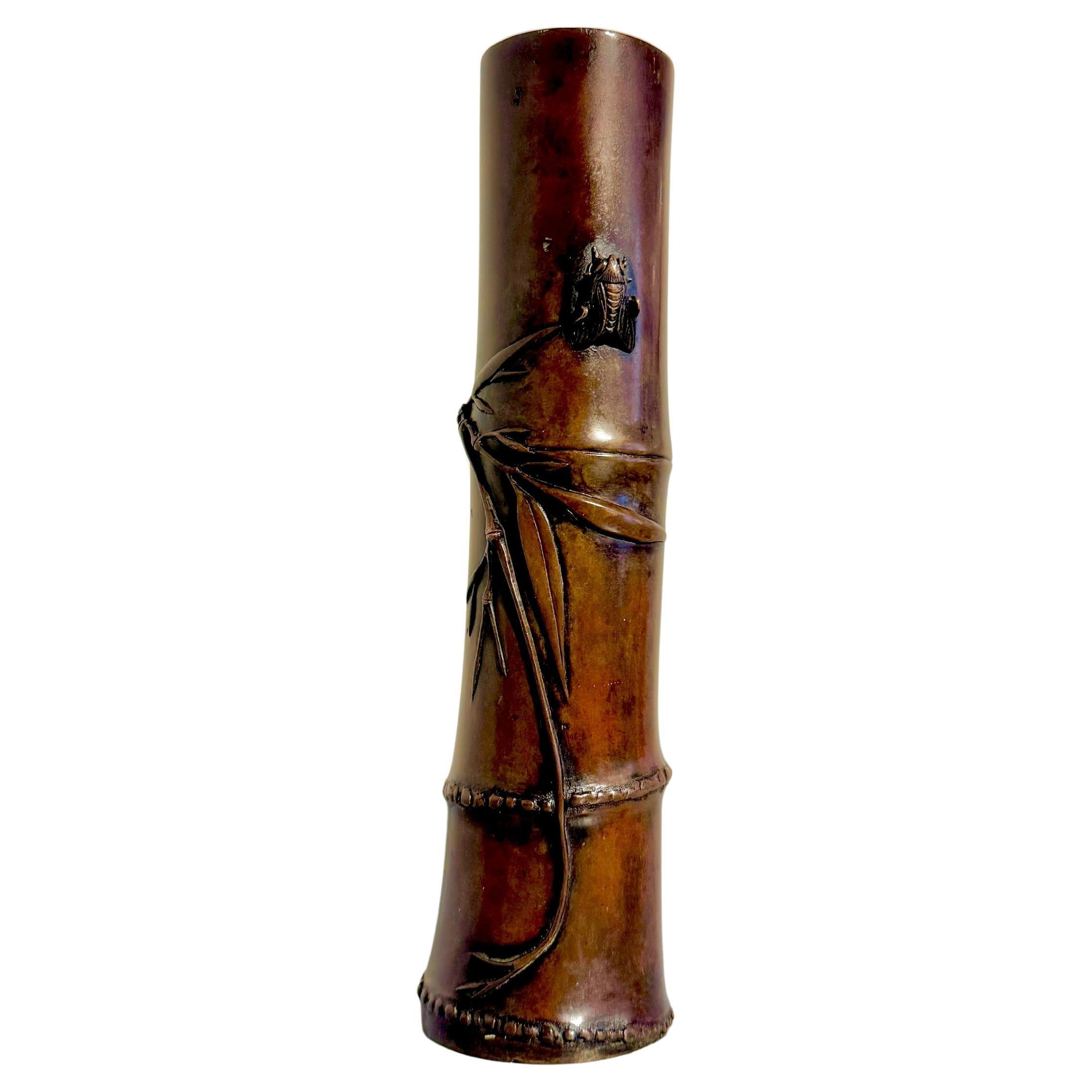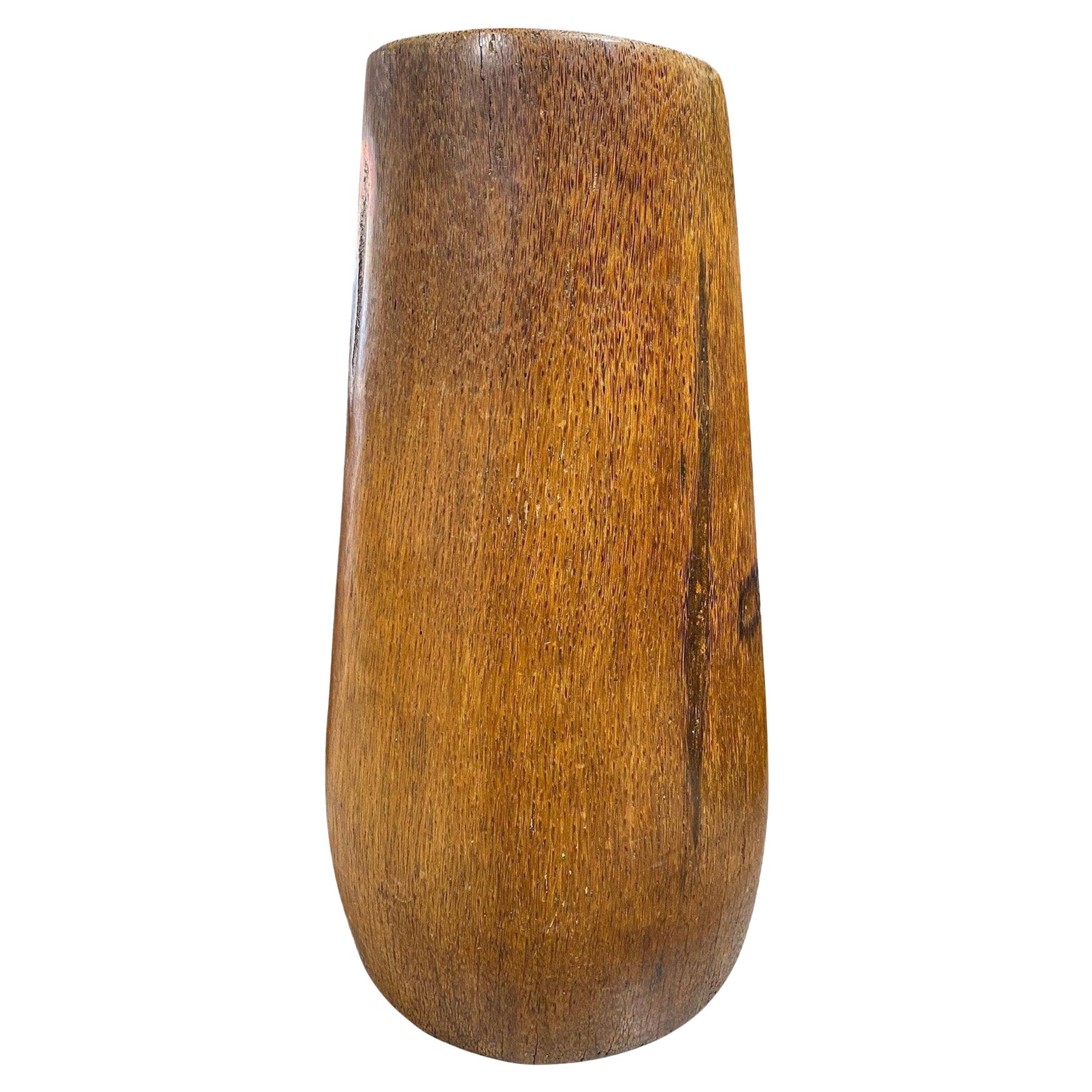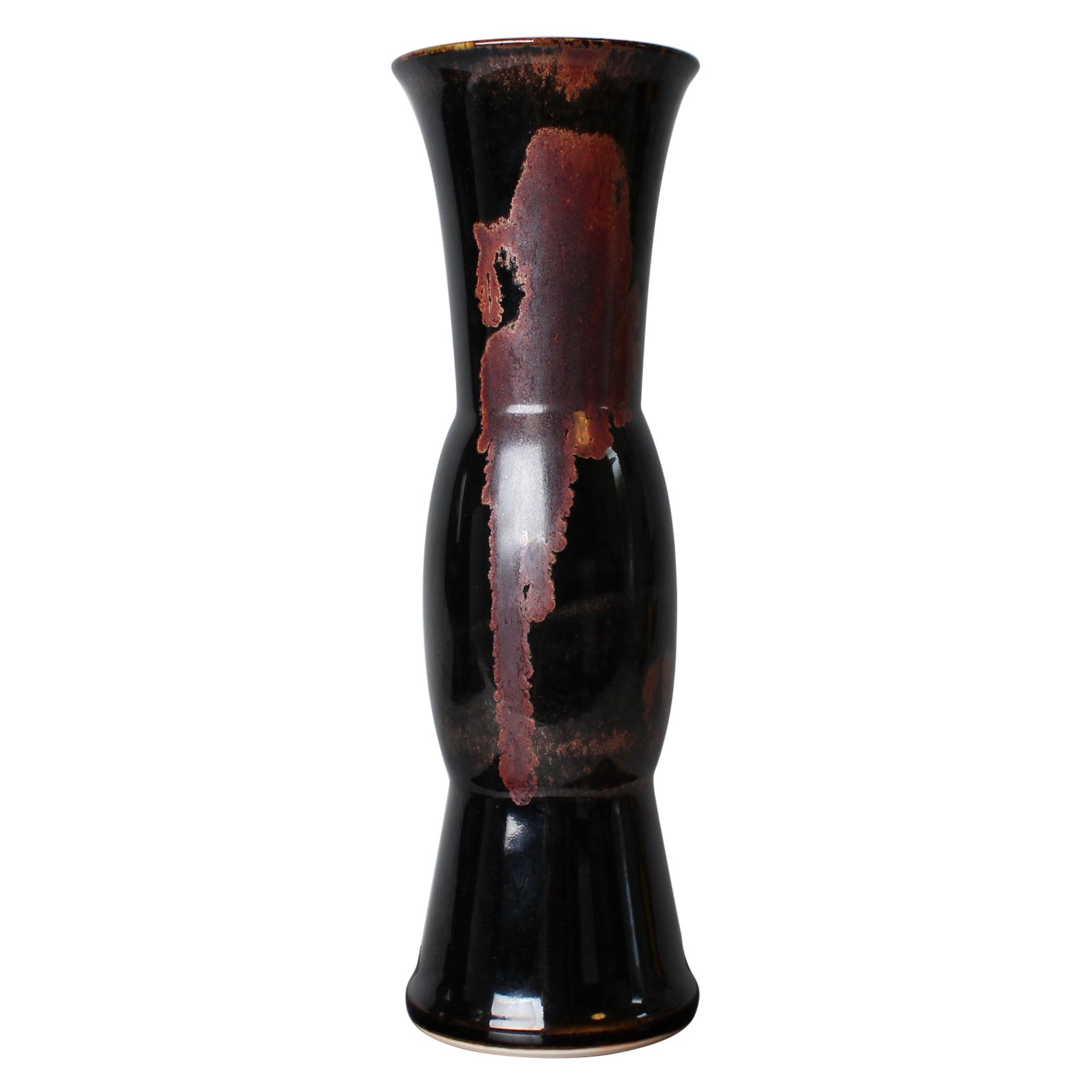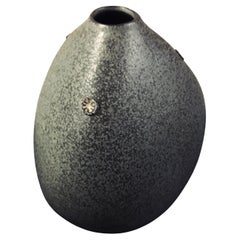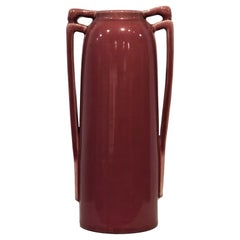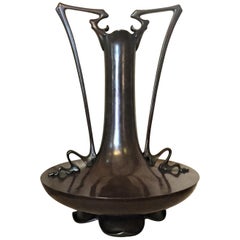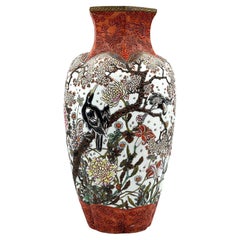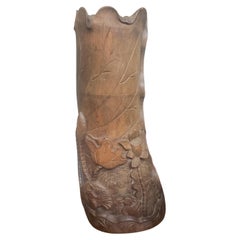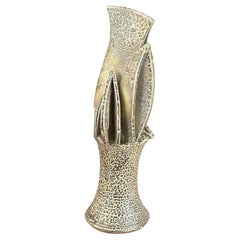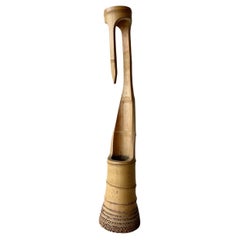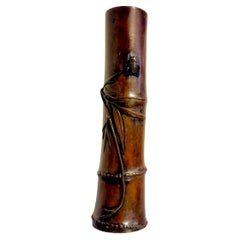Items Similar to Atique Japanese Rootwood & Bamboo Ikebana Vase, XIX Century
Want more images or videos?
Request additional images or videos from the seller
1 of 13
Atique Japanese Rootwood & Bamboo Ikebana Vase, XIX Century
$1,500
£1,135.27
€1,303.51
CA$2,136.87
A$2,317.49
CHF 1,217.23
MX$28,150.01
NOK 15,231.76
SEK 14,341.55
DKK 9,731.63
About the Item
Atique
Rootwood & Bamboo
Ikebana Vase
Japan, XIX Century
DIMENSIONS
Height: 19.25vinches
Width: 10.13 inches
Depth: 9.5 inches
ABOUT
This absolutely unique ikebana vase consists of three parts, each of which is made exclusively from organic materials - wood, bark and perennial bamboo trunk. The main and largest of the three parts, as if hugging the bamboo vase itself, is made of bark tightly attached to a wooden base. Thus, when composing an ekibana, the vase itself becomes an integral organic part of the entire floral composition as a whole.
In ikebana, the Japanese art of flower arranging, blossoms, branches, leaves, and stems find new life as materials for art making. In contrast to the western habits of casually placing flowers in a vase, ikebana aims to bring out the inner qualities of flowers and other living materials and express emotion.
The origins of ikebana can be traced back to the introduction of Buddhism to Japan via the Silk Road between the 6th and 8th centuries. An early form of ikebana involved offering flowers to Buddha, signifying a deep spiritual connection with nature, maintaining the 3 basic principles of representing nature through heaven, earth, and man with 3 primary flowers.
Ikebana arrangements are not unlike sculpture. Considerations of color, line, form, and function guide the construction of a work. The resulting forms are varied and unexpected, and can range widely in terms of size and composition, from a piece made from a single flower to one that incorporates several different flowers, branches, and other natural objects.
Clearly, in this particular case, this ikebana vase inspires an ancient meditative practice; serving as a botanical shrine to nature.
- Dimensions:Height: 19.25 in (48.9 cm)Width: 10.13 in (25.74 cm)Depth: 9.5 in (24.13 cm)
- Style:Japonisme (Of the Period)
- Materials and Techniques:
- Place of Origin:
- Period:
- Date of Manufacture:Late 19th Century
- Condition:Wear consistent with age and use. We make our best effort to provide a fair and descriptive condition report. Please examine photos attentively for they are an important part of the description. Send us a message to request more details or discuss price.
- Seller Location:New York, NY
- Reference Number:1stDibs: LU2819338103692
About the Seller
5.0
Gold Seller
Premium sellers maintaining a 4.3+ rating and 24-hour response times
Established in 1993
1stDibs seller since 2017
86 sales on 1stDibs
Typical response time: 5 hours
- ShippingRetrieving quote...Shipping from: New York, NY
- Return Policy
Authenticity Guarantee
In the unlikely event there’s an issue with an item’s authenticity, contact us within 1 year for a full refund. DetailsMoney-Back Guarantee
If your item is not as described, is damaged in transit, or does not arrive, contact us within 7 days for a full refund. Details24-Hour Cancellation
You have a 24-hour grace period in which to reconsider your purchase, with no questions asked.Vetted Professional Sellers
Our world-class sellers must adhere to strict standards for service and quality, maintaining the integrity of our listings.Price-Match Guarantee
If you find that a seller listed the same item for a lower price elsewhere, we’ll match it.Trusted Global Delivery
Our best-in-class carrier network provides specialized shipping options worldwide, including custom delivery.More From This Seller
View AllJapanese Emperor Shōwa Period Kiyomizu-Ware Vase, 18th Century
Located in New York, NY
Japanese Emperor Shōwa Period Kiyomizu-Ware Vase, 18th Century
Emperor Shōwa Period - from 1926 to 1989/1990
DIMENSIONS
Height: 9 inches
diame...
Category
Antique 1770s Japanese Japonisme Vases
Materials
Ceramic
Japanese Art Nouveau Awaji Ware Art Studio Pottery Flower Vase, ca. 1900s
Located in New York, NY
Japanese Art Nouveau
Flower Vase
Awaji Ware Art Studio Pottery
ca. 1900s
ABOUT AWAJI WARE ART STUDIO POTTERY
Awaji pottery was made on the Japanese island of the same name between...
Category
Antique Early 1900s Japanese Art Nouveau Vases
Materials
Pottery
Japanese Art Nouveau Meiji Period Patinated Bronze Vase, circa 1900
Located in New York, NY
Although unmarked, this rare and important, grand but at the same exquisite patinated bronze vase has just a very few little details, defying the shape of the handles, as well as the...
Category
Antique Early 1900s Japanese Art Nouveau Vases
Materials
Bronze
Japanese Meiji Period Porcelain Vase by Shimazu Gyokuzan, Ca. 1890
Located in New York, NY
Japanese Meiji Period Porcelain Vase by Shimazu Gyokuzan, Ca. 1890
DIMENSIONS
Height: 18.5 INCHES
Diameter: 9 inches
DETAILS
Meiji Period (1868 -1912) – Ca.18...
Category
Antique 1890s Japanese Japonisme Vases
Materials
Porcelain
Alfonso Canciani, Viennese Secession Orientalist Bronze Vase, c. 1910
By Alfonso Canciani
Located in New York, NY
Alfonso Canciani (Italian-Austrian, 1863-1955) was a famous Italian-Austrian sculptor of the period of accession to the Viennese Secession. Son of a stonemason, after a realist period he managed to establish himself as a leading sculptor of the Viennese Secession. In fact, he worked in Vienna, where he had enrolled in 1886 at the Academy of Fine Arts, then at the Higher School of Sculpture and finally at the Special School, where he obtained the Rome prize for the sketch for Dante's Monument.
He developed a notable business obtaining important prizes and numerous commissions. First among the sculptors of the Viennese capital, he was invited to join the Association of the Viennese Secession, of which Klimt was magna pars, after the exhibition of Dante's group in 1900 at the Secession exhibition, and obtained the most important Austrian artistic prize, the Kunstlerlpreis.
This same work, presented in 1910 in Berlin, at the Great Art Exhibition, also received an important recognition here. He obtained the Rome prize in 1896, exhibited successfully in Munich and in 1899 at the III International Art Exhibition in Venice.
In that period he made some statues of saints for the cathedral of Santo Stefano in Vienna, the monument to Wagner, the bust of Nietzsche for the University, the scepter and the gold chain of the University Rector, figures of Italian poets ( Petrarch, Boccaccio, Tasso, Ariosto).
He submitted a sketch for the official monument to Empress Elizabeth, which was then built in Austrisn Gföhl and Pula. At the time of his accession to the Secession, he dedicated himself to decorating the facade of the Artaria house in Vienna in collaboration with the architect Max Fabiani.
He later abandoned the symbolist decorativism of the Jugendstil for a more concentrated and vigorous style, approaching the Belgian sculptor Constantin Meunier for the theme of work, and preferring to exhibit at the Künstlerhaus.
In Vienna, he was generous with advice and help with the Italians and in particular with his fellow citizens (such as the Brazzanese Luigi Visintin, then a university student).
After the First World War, he returned to Italy and lived in Friuli, penalized by the fact that the Habsburg Empire had by now disappeared. Instead of large-scale public monuments, he then devoted himself to engraving medals (e.g. for Benedict XV and for the Italian mission in Vienna in 1919) and to designing funeral monuments (examples in Mali Lošinj and Trieste) and portrait busts (of Generals Carlo Caneva and Antonio Baldissera in Udine, sculptures of the War Memorial of Corno di Rosazzo). After all, he had already executed the Bab grave monument in the Döblinger cemetery in Vienna in 1909.
He taught in Trieste from 1920 until 1935, at the local school of industrial art, where he had Marcello Mascherini...
Category
Vintage 1910s Austrian Jugendstil Vases
Materials
Bronze
Japanese Contemporary Grand Pottery Sculpture, Ca. 1980
Located in New York, NY
Japanese Contemporary Grand Pottery Sculpture, Ca. 1980
ABOUT
This absolutely unique late 20th Century pottery sculpture with bamboo-styled formed handles features a wonderful artis...
Category
Vintage 1980s Japanese Japonisme Abstract Sculptures
Materials
Pottery
You May Also Like
Early 20th Century Large Anglo-Japanese Hand Carved Bamboo Vessel
Located in Germantown, MD
An Early 20th century Anglo-Japanese hand carved bamboo vessel in great vintage condition.
Category
Early 20th Century Japanese Anglo-Japanese Vases
Materials
Bamboo
California Studio Pottery Ikebana Vase
Located in San Diego, CA
California studio pottery signed ikebana vase with multiple openings, circa 1960s. This very unique piece measures: 4.5" D x 14.5" H and is signed on the ...
Category
Mid-20th Century American Mid-Century Modern Planters, Cachepots and Jar...
Materials
Pottery
$300 Sale Price
20% Off
1975 Japanese Crane-Neck Bamboo Ikebana Flower Arrangement Vase
Located in Chiba, JP
H 68.5 x 14.5 x 13.5 cm (26.96 x 5.70 x 5.31in). Showa period (1975). A type of traditional Japanese ikebana flower arrangement vase. Inside copper-plated. Aged deterioration as is.
Category
Vintage 1970s Japanese Japonisme Antiquities
Materials
Copper
Japanese Bronze Bamboo Hanging Vase, Kakehana, Meiji Period, circa 1900, Japan
Located in Austin, TX
A subtle and beautiful Japanese bronze hanging flower vase, kakehana, Meiji Period, circa 1900, Japan.
The slim and elegant vessel of cast bronze in the form of a stalk of segmented...
Category
Antique Early 1900s Japanese Meiji Vases
Materials
Bronze
Large Carved Bamboo Wood Specimen Natural Organic Sculpural Wabi-Sabi Root Vase
Located in Studio City, CA
A truly spectacular one of a kind work - a large, quite heavy hand carved natural wood (perhaps a massive root) or bamboo standing vase. The piece has a ...
Category
20th Century Organic Modern Vases
Materials
Bamboo, Wood
Ichikawa Kouzan Nabeshima Ceramic Vase with Irresistible Charm
Located in Fukuoka, JP
Captivating Nabeshima ceramic vase by Master Artisan Ichikawa Kouzan. Continuing the legacy of 18 generations of ceramics production since the late 16th century. Patronized by Nabeshima Daimyo, a powerful samurai lord, and renowned for unmatched quality and artistic ingenuity. Passed down with secret formulas for generations. Includes signed wooden storage box.
Dimensions: H.30cm (11.8 inches), W.9cm (3.54 inches)
Weight: 660gr (1.45 lbs) without box, 1.15kg (2.53 lbs) with box
Nabeshima ware is a type of Japanese porcelain that originated in the late 17th century during the Edo period. It was produced exclusively for the Nabeshima clan, a powerful feudal lord...
Category
Mid-20th Century Ceramics
Materials
Ceramic, Porcelain
More Ways To Browse
Japanese Bamboo Furniture
Japanese Ikebana
8th Century
Ikebana Vase
Ikebana Vessel
Japanese Wood Vase
Japanese Bamboo Vase
Bamboo Ikebana Vase
California Pottery 1960s
Japanese Blue And White Jardiniere
Art Deco Flower Pot
Chinese Flower Planters
Dynasty Planter
English Majolica Jardiniere
Large Ceramic Glazed Pots
Lion Head Cachepot
Minton Majolica Planter
1920 Flower Pot Art Deco
